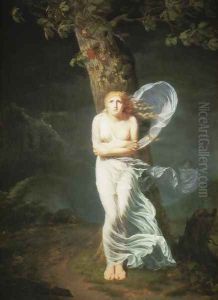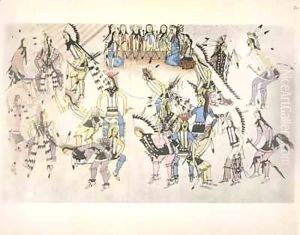Fereol de Bonnemaison Paintings
Féréol Bonnemaison, often referred to as Féréol de Bonnemaison, was a French artist known primarily for his portrait miniatures and his role in the development of lithography in France. Born in 1777 in the town of Ruffec, Bonnemaison trained under the renowned miniaturist Jean-Baptiste Jacques Augustin in Paris, which was the epicenter of the miniature painting world at the end of the 18th century. His education under Augustin no doubt influenced his style and technique, which was characterized by meticulous detail and a delicate touch.
Bonnemaison's career spanned a period of great social and political upheaval in France, from the Revolution through the Napoleonic era and into the Bourbon Restoration. Despite the turbulence of the times, he managed to maintain a successful career. His clientele included many prominent figures of the day, reflecting his reputation and skill as a miniaturist. Bonnemaison was also active as a draftsman and printmaker, and he played a significant role in the early history of lithography in France, being one of the first to experiment with and promote the new medium, which had been invented by Alois Senefelder in 1796.
Although Bonnemaison's miniatures are well-regarded, his lasting impact is perhaps more significantly tied to his involvement with lithography. He recognized the potential of this new technique for both artistic expression and commercial reproduction, and he was instrumental in its adoption by other artists and in its commercial success. Unfortunately, much of his work has not survived to the present day, and as a result, he is not as well-known as some of his contemporaries.
Bonnemaison's later life was marked by his continued artistic production and his contribution to the cultural landscape of France. He passed away in 1841, leaving behind a legacy that is important for understanding the development of portrait miniatures and the history of printmaking in the 19th century. His work is held in several museums and private collections, where it continues to be studied and appreciated for its elegance and historical value.

